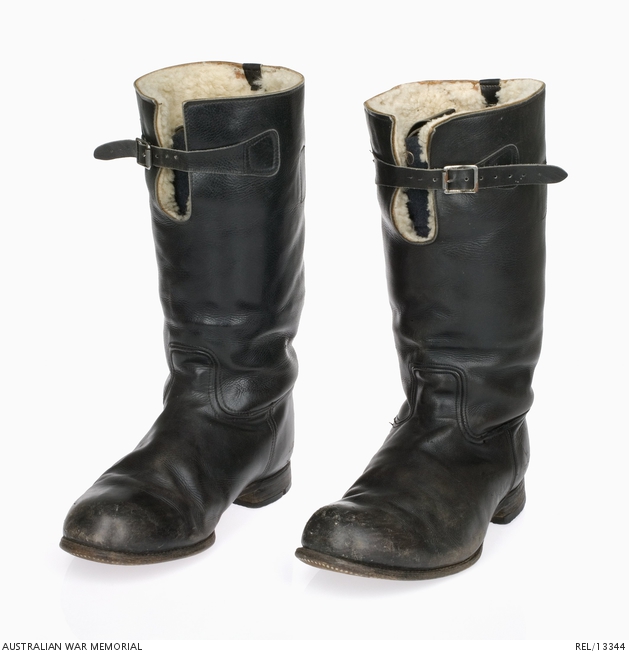These boots are made for walking...
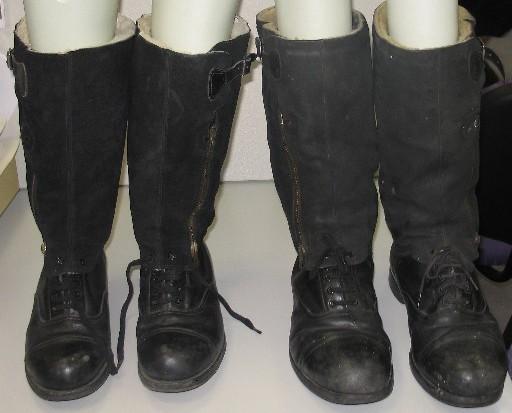
Among the items held at the Memorial that were issued to air crew serving in Europe, are two pairs of very interesting 1943 Pattern escape boots. The boots were designed so that an airman downed in Europe could remove a small concealed knife and cut off the top section of the boot to reveal a civilian looking shoe.
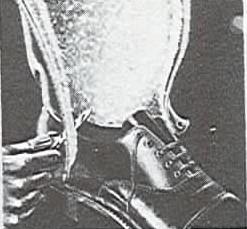

The 1943 Pattern escape boot was designed in response to reports received from returned airmen who had baled out over occupied Europe and managed to make their way back to England. The men reported that when on the run from the Germans, their flying boots had a number of problems. The most significant were that they were highly conspicuous when trying to blend in with the local population and that they became heavy and waterlogged if the boots got wet. A prototype escape boot was designed by Clayton Hutton in around 1941 (The boots were one of the pieces of escape and evasion equipment designed by Hutton featured in a February 1942 publication 'Per Ardua Libertas', published for the benefit of visiting American intelligence officers). Hutton worked at MI9 designing escape aids for issue to service personnel, or to be smuggled into prisoner of war camps. Some airmen undertaking missions over Europe in 1942 were issued the prototype boots. The boots were successful and went into production.

Some versions of the 1943 Pattern boot contained gigli saws hidden in the shoe laces. Gigli saws are used by surgeons to cut through bone. They are made from special steel wire, are very pliable and could be hidden inside the laces. Once removed from the lace and held at the right tension, the gigli saw could cut through very hard substances. The boots also had magnetised metal shoe lace ends that could be used as bar compasses. The 1943 Pattern escape boots held by the Memorial have the metal lace ends that were magnetised (they have since lost their magnetic qualities), but I wanted to know if the boots had gigli saws in the laces, as not all the boots issued did. I did not want to damage the laces, so used a voltage/metal stud detector to test if there was steel wire hidden in the laces. The stud detector responded to the metal lace ends, however there was no response in the rest of the laces, indicating there were no steel saws hidden inside. I have to admit it was a little disappointing not to discover a saw! Below is a photograph of the inside of the right boot, showing the wool lining used to help keep airmen warm at high altitudes. The rectangular patch is a small pocket where the knife was hidden. Unfortunately the boots did not come to the Memorial with their knives. In other versions of this boot, the knives were held in the heel. In some boots even more items, such as maps or money, could be hidden in a secret compartment in the heel. A basic inspection of the heels in the Memorial's boots indicated they do not have secret compartments.
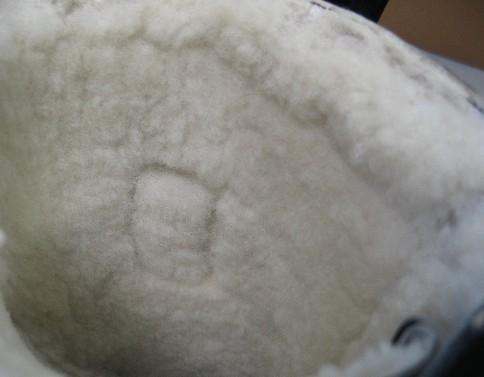
One of the original concepts for the boot was that the detachable wool lined sued section of each boot could be joined together to create a 'warm winter waistcoat'. One Australian airman who evaded capture and made it back to England in 1944 who used these pieces under his hip and shoulder when sleeping rough, to help keep his body raised off the ground to help keep him warm. During the day he wrapped them around his chest under his jumper, using the zippers and straps to hold them in place.
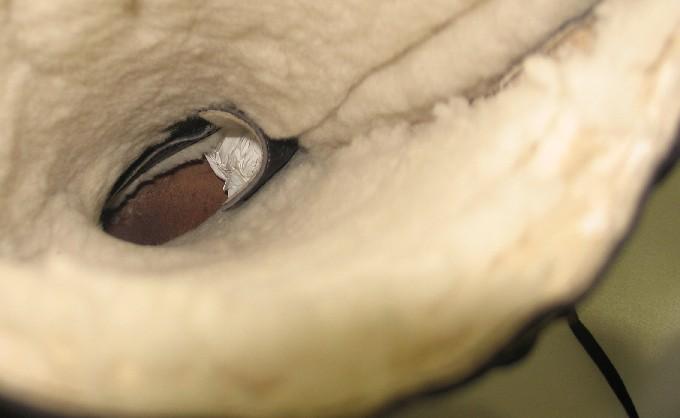
Before the introduction of the 1943 Pattern boot, airmen wore a variety of boot designs. The 1936 Pattern boot is shown below. It was replaced by the 1939 Pattern (not pictured), which was similar in style, but had a vulcanised fabric leg. Many airmen must have found the 1936 Pattern boot relatively comfortable as the boots continued to be worn, long after other pattern boots had been issued. However, neither pattern had enough room to eaisly allow the legs of the flying suit to be tucked into the boots. In addition, the vulcanised rubber of the 1939 Pattern boot did not repel dew from grass along runways. This water could then freeze while flying at high altitudes, so a new pattern was designed.
The new design was the 1940 Pattern boot (below) issued in 1941. These boots were looser and allowed for the flying suit legs to be tucked in, however this led to another problem - they often came off when baling out of planes
To alleviate this problem the 1941 Pattern boot was then issued - essentially the 1940 Pattern boot with the addition of a leather strap that could be tightened around the ankle (below) to help keep the boots on when baling out.

The 1943 Pattern escape boot was the last boot designed and issued during the war. Despite the advantages of this boot when evading capture in occupied Europe, some airmen found them to be uncomfortable when flying and preferred to wear their older issue boots.
In the 1942 photograph above, the airmen are wearing a variety of boots, (from left to right) 1939 Pattern boots, 1940 Pattern boots, 1936 Pattern boots, and the man on the on the far right appears to be wearing the 1943 Pattern escape boots, you can just make out the strap at the top, the zipper down the inner front and the shoe laces on the civilian style shoe section.

Some relevant publications containing information about flying boots / escape and evasion equipment includes: Official Secret: The remarkable story of escape aids - their invention, production - and the sequel by Clayton Hutton Flying Clothing: The story of its development by Louise Greer and Anthony Harold Per Ardua Libertas by MI9 (1942) MI9: The British secret service that fostered escape and evasion 1939-1945 and its American counterpart by MRD Foot and JM Langley The Royal Air Force 1939-45 by Andrew Cormack, illustrations by Ron Volstad (Osprey Men at Arms series) French Leave by Anthony Matthews (Memoirs of an Australian who evade capture in Europe)
